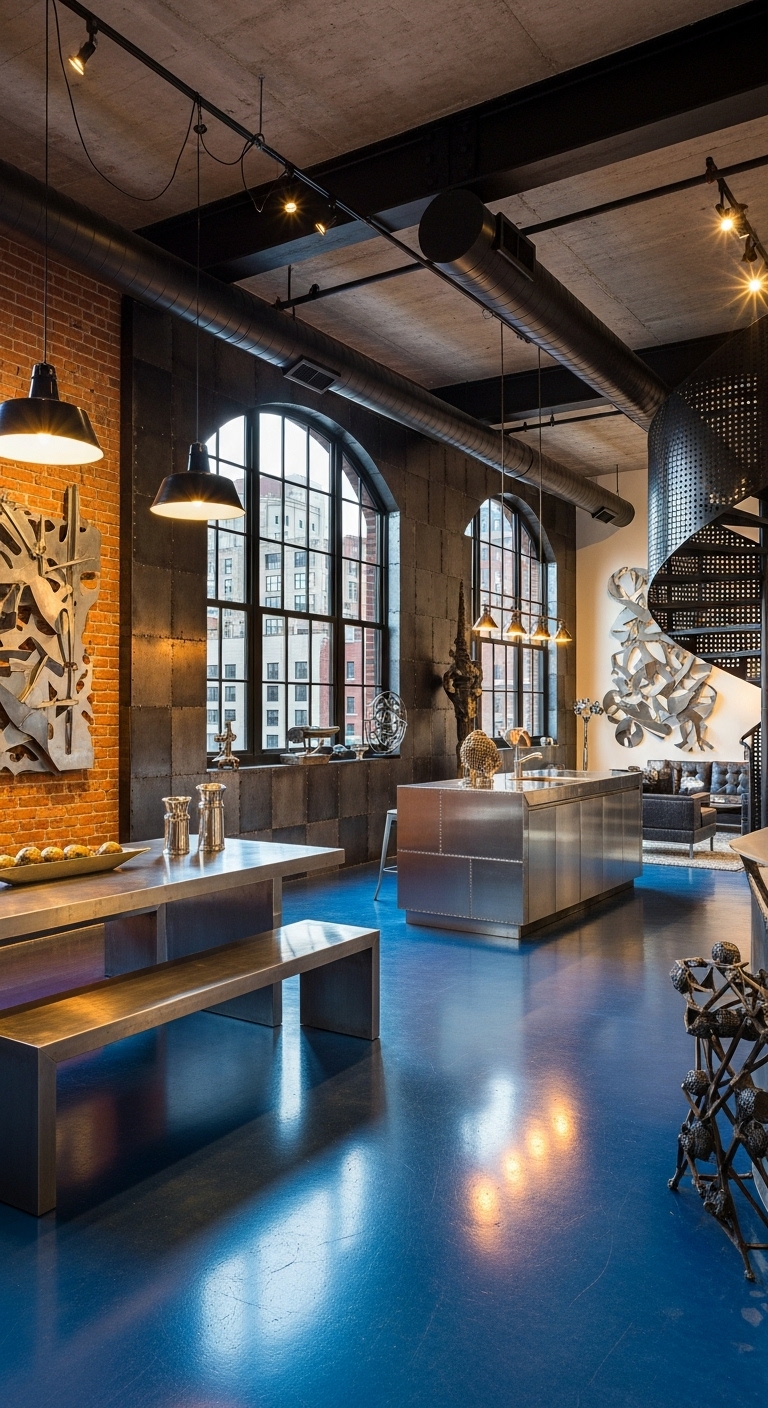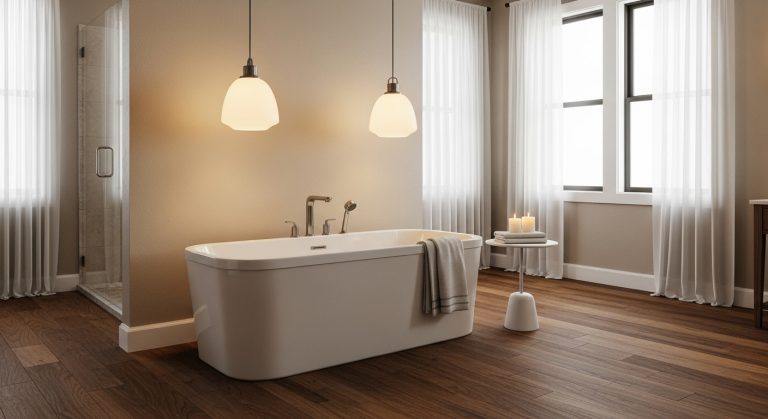Peel-and-Stick Vinyl Flooring: The Ultimate Guide 2025

Flooring plays an essential role in defining the look, feel, and functionality of your home. While traditional hardwood, tile, and carpet remain popular, many homeowners are turning to more affordable, DIY-friendly options that balance style, durability, and ease of installation. One of the fastest-growing flooring options is peel-and-stick vinyl flooring—a versatile solution that has become a favorite for budget-conscious homeowners, renters, and DIY enthusiasts.
In 2025, peel-and-stick vinyl flooring is more advanced than ever. With realistic wood and stone looks, water resistance, and easy installation, this flooring type has moved beyond temporary fixes to become a serious design option. Whether you’re renovating a bathroom, refreshing a kitchen, or updating a rental property, peel-and-stick vinyl offers affordability, flexibility, and style.
This comprehensive guide will walk you through everything you need to know about peel-and-stick vinyl flooring—its benefits, drawbacks, installation steps, costs, design options, maintenance, and the latest trends for 2025.

What is Peel-and-Stick Vinyl Flooring?
Peel-and-stick vinyl flooring is a type of self-adhesive vinyl tile or plank that comes with a pre-applied adhesive backing. Unlike traditional flooring that requires glue or nails, peel-and-stick vinyl only requires you to peel off the protective paper and press the tile or plank firmly onto the subfloor.
Key Features:
- DIY-friendly installation (no special tools or adhesives required).
- Variety of styles—wood, stone, tile, and geometric designs.
- Affordable compared to hardwood, laminate, and ceramic tile.
- Water-resistant (some options are fully waterproof).
- Great for temporary and permanent projects.

Composition of Peel-and-Stick Vinyl Flooring
Peel-and-stick vinyl is made from multiple layers that combine durability with design appeal:
- Wear Layer
- Transparent protective coating that resists scratches, scuffs, and stains.
- Thicker wear layers = longer lifespan.
- Print Layer
- Contains the design (wood, stone, marble, tile, or patterns).
- High-definition printing makes designs realistic.
- Vinyl Core
- Provides structure, flexibility, and durability.
- Adhesive Layer
- Pre-applied sticky backing with a peel-away cover sheet.
- Eliminates the need for separate glue.

Types of Peel-and-Stick Vinyl Flooring
1. Peel-and-Stick Vinyl Tiles
- Square-shaped tiles (typically 12″ x 12″).
- Mimic ceramic tile, marble, or patterned flooring.
- Great for kitchens, bathrooms, and laundry rooms.

2. Peel-and-Stick Vinyl Planks
- Long, narrow planks (similar to hardwood boards).
- Realistic wood-look visuals with grains and textures.
- Popular for living rooms, bedrooms, and hallways.

3. Luxury Peel-and-Stick Vinyl (LVT)
- Thicker and more durable than standard vinyl.
- Enhanced wear layer and realistic finishes.
- Suitable for higher-traffic residential or light commercial use.

Pros of Peel-and-Stick Vinyl Flooring
- Easy DIY Installation
- No need for glue, nails, or professional installers.
- Perfect for beginners and quick makeovers.
- Budget-Friendly
- One of the most affordable flooring solutions.
- Stylish Variety
- Available in wood, stone, marble, tile, and creative patterns.
- Water-Resistant
- Many peel-and-stick vinyl options resist moisture, making them suitable for kitchens and bathrooms.
- Quick Updates
- Easy to install over existing flooring (with proper prep).
- Ideal for rental properties or temporary fixes.
- Low Maintenance
- Simple cleaning with sweeping and mopping.
- Comfortable & Quiet
- Softer underfoot than ceramic tile or stone.
- Provides some sound absorption.

Cons of Peel-and-Stick Vinyl Flooring
- Less Durable
- Thinner than traditional vinyl plank or tile.
- Can wear out faster in high-traffic areas.
- Damage Susceptibility
- Prone to scratches, dents, and peeling if not installed properly.
- Moisture Issues
- While water-resistant, excessive water can loosen adhesive.
- Shorter Lifespan
- Typically lasts 5–10 years, compared to 15–25 years for LVP.
- Surface Prep Required
- Subfloor must be smooth, clean, and level to prevent lifting.

Cost of Peel-and-Stick Vinyl Flooring (2025)
Peel-and-stick vinyl flooring remains one of the most affordable flooring options.
- Material Costs: $0.50 – $3.00 per sq. ft.
- Installation Costs: $0 (DIY) or $1 – $2 per sq. ft. (professional).
- Total Cost Installed: $0.50 – $5.00 per sq. ft.
Compared to hardwood ($8–$15 per sq. ft.) or ceramic tile ($6–$12 per sq. ft.), peel-and-stick vinyl offers significant savings.

Installation Guide for Peel-and-Stick Vinyl Flooring
Installing peel-and-stick vinyl is straightforward, but proper preparation is key.
Tools Needed:
- Utility knife
- Straight edge or ruler
- Measuring tape
- Roller (for pressing tiles firmly)
- Level
- Cleaning supplies
Step-by-Step Installation:
- Prepare the Subfloor
- Ensure it’s clean, smooth, and dry.
- Patch cracks and sand down uneven areas.
- Plan the Layout
- Measure the room and dry-fit tiles or planks.
- Start from the center of the room for a balanced look.
- Peel and Stick
- Remove the backing paper.
- Place the tile or plank carefully and press firmly.
- Cut to Fit
- Use a utility knife to trim tiles for edges and corners.
- Press and Seal
- Use a roller to press tiles firmly into place.
- Ensure all edges are secure to avoid lifting.
Peel-and-Stick Vinyl vs. Other Flooring
| Feature | Peel-and-Stick Vinyl | LVP (Luxury Vinyl Plank) | Laminate | Tile |
|---|---|---|---|---|
| Cost | $0.50–$5/sq. ft. | $3–$10/sq. ft. | $2–$7/sq. ft. | $6–$15/sq. ft. |
| Durability | Low–Moderate | High | Moderate | Very High |
| Installation | Easiest DIY | Moderate | DIY/Pro | Pro recommended |
| Water Resistance | Good | Excellent | Moderate | Excellent |
| Lifespan | 5–10 years | 15–25 years | 10–20 years | 30+ years |
Maintenance & Care Tips
- Regular Cleaning: Sweep or vacuum to remove dirt.
- Mopping: Use a damp mop with mild cleaner. Avoid harsh chemicals.
- Furniture Pads: Protect against scratches by adding felt pads.
- Moisture Control: Wipe up spills immediately to avoid loosening adhesive.
- Avoid Heavy Loads: Do not drag heavy furniture across the surface.
Design Trends in Peel-and-Stick Vinyl Flooring (2025)
- Realistic Wood-Look Planks
- Wide planks with authentic textures are in high demand.
- Stone & Marble Looks
- Affordable alternatives to expensive natural stone.
- Bold Patterns & Geometrics
- Peel-and-stick vinyl is being used for accent floors and statement designs.
- Matte Finishes
- More natural, less glossy surfaces.
- Eco-Friendly Materials
- Manufacturers introducing low-VOC adhesives and recyclable options.
Best Places to Use Peel-and-Stick Vinyl
- Kitchens – Water-resistant and easy to clean.
- Bathrooms – Ideal for budget-friendly makeovers.
- Laundry Rooms – Handles moisture and detergent spills.
- Basements – Affordable for large spaces (with moisture control).
- Rental Properties – Cost-effective and easy to replace.
- Accent Floors – Great for creative DIY projects.
Lifespan & Durability
Peel-and-stick vinyl typically lasts 5–10 years, depending on quality, installation, and foot traffic. While not as long-lasting as traditional vinyl planks or hardwood, it provides excellent value for its price.
Is Peel-and-Stick Vinyl Flooring Right for You?
Peel-and-stick vinyl flooring is a smart choice if you want:
- Budget-friendly flooring that looks stylish.
- DIY installation without professional help.
- Water-resistant floors for kitchens, bathrooms, and basements.
- Quick updates for rentals or temporary spaces.
However, if you want long-term durability or luxury appeal, you may prefer options like luxury vinyl plank, laminate, or hardwood.
Conclusion
Peel-and-stick vinyl flooring has transformed from a quick fix to a stylish, practical flooring solution in 2025. With its affordability, easy DIY installation, and variety of designs, it’s perfect for homeowners, renters, and anyone looking for a cost-effective flooring upgrade.
While it may not last as long as premium flooring types, peel-and-stick vinyl remains one of the best value-for-money flooring options on the market today. From rustic wood-look planks to elegant marble patterns, it offers endless possibilities for every style and budget.






